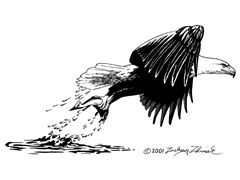Extension Wildlife & Fisheries Specialists Conferences

Triennial National Wildlife and Fisheries Extension Specialists Conference: 11th (2006)
Date of this Version
October 2006
Document Type
Article
Abstract
Tall fescue and other non-native perennial cool-season grasses (such as orchardgrass, timothy, bromegrasses, and bluegrass) provide poor wildlife habitat. Native warm-season grasses (nwsg), especially big and little bluestem, indiangrass, and switchgrass, have been promoted to replace non-native cool-season grasses and enhance quality early succession habitat. Initially, problems associated with establishing nwsg and landowner misperceptions slowed the progress of early succession habitat enhancement on private lands. More recently, improvements in planting equipment, herbicides, and seed quality have increased establishment success. Wildlife response to native grass plantings generally has been positive, especially when an abundance of wildlife-friendly forbs and scattered shrubs occur with the grasses. Landowners, however, still have misperceptions about native grass plantings. Specifically, there is considerable confusion as to the appearance of quality early succession habitat. A persistent “farming mentality” finds fields with a diverse composition and structure unappealing. Instead, landowners typically wish to see fields of planted native grass appear like a tall fescue field–thick, clean and even, visually pleasing, with no “weeds.” Unfortunately, many wildlife managers have the same misconception that “clean” native grass fields should be the goal when managing for grassland species. Prime early succession cover often is created simply by killing the non-native grass carpet and then stimulating the native seedbank with fire or disking. Further, there is no need to even plant nwsg where broomsedge and a variety of forbs, brambles, and sumac await release. We suggest an integrative approach, using extension pamphlets, professional development workshops, landowner meetings, and field demonstrations, to teach wildlife managers and landowners the appropriate composition and structure of nwsg plantings and other early succession habitats.


Comments
Published in Proceedings, 11th Triennial National Wildlife & Fisheries Extension Specialists Conference, October 14-18, 2006, Big Sky, MT.